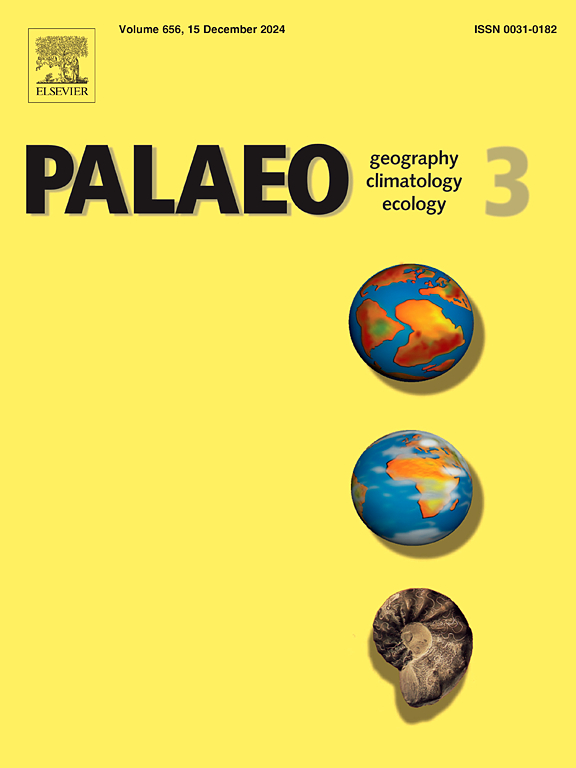Benthic foraminiferal Mg/Ca response across the Aptian-Albian Boundary Interval at DSDP Site 511 (Falkland Plateau)
IF 2.6
2区 地球科学
Q2 GEOGRAPHY, PHYSICAL
Palaeogeography, Palaeoclimatology, Palaeoecology
Pub Date : 2025-02-05
DOI:10.1016/j.palaeo.2025.112769
引用次数: 0
Abstract
One of the largest extinctions among planktonic foraminifera occurred across the Aptian-Albian Boundary Interval (AABI), 113 million years ago. The cause of this extinction has not been determined and, paradoxically, no taxonomic turnover has been observed among other fossil groups living at the same time. The study presented here is based on core samples from Deep Sea Drilling Project (DSDP) Site 511 (Falkland Plateau), which yields the most complete record of the planktonic foraminiferal extinction record across the AABI. Stable oxygen and carbon isotopic ratios of carbonate in bulk samples both show a 2.5 ‰ negative excursion spanning ∼1 m.y. above and below the AABI. This research uses a multiproxy approach to investigate if there were significant changes in marine temperatures and/or shifts within the carbonate system that could explain the planktonic foraminiferal extinctions. New data include: 1) X-Ray diffraction analyses of surrounding sediments; 2) Mg/Ca analyses of the cross-sections of the test walls of different benthic foraminifera species in samples that span the AABI using in situ techniques; and 3) δ18O and δ13C on shell and spar, of monospecific separates of foraminiferal species analyzed for Mg/Ca. XRD results reveal that all samples are composed of similar mineral phases occurring in similar proportions. The Mg/Ca results show small changes across the interval suggesting a cooling trend. Finally, the new isotope analyses performed separately on the shell and spar show that the large negative excursion within the boundary interval seem more likely to represent post depositional diagenetic overprints than climatic signal.
求助全文
约1分钟内获得全文
求助全文
来源期刊
CiteScore
5.90
自引率
10.00%
发文量
398
审稿时长
3.8 months
期刊介绍:
Palaeogeography, Palaeoclimatology, Palaeoecology is an international medium for the publication of high quality and multidisciplinary, original studies and comprehensive reviews in the field of palaeo-environmental geology. The journal aims at bringing together data with global implications from research in the many different disciplines involved in palaeo-environmental investigations.
By cutting across the boundaries of established sciences, it provides an interdisciplinary forum where issues of general interest can be discussed.

 求助内容:
求助内容: 应助结果提醒方式:
应助结果提醒方式:


